Mariana Ferratto, Rowena Harris, Luana Perilli
10.05.2021 – 12.06.2021
Exhibition Views

Dimore. Mariana Ferratto – Rowena Harris – Luana Perilli, 2021, installation view (ground floor), ph Giorgio Benni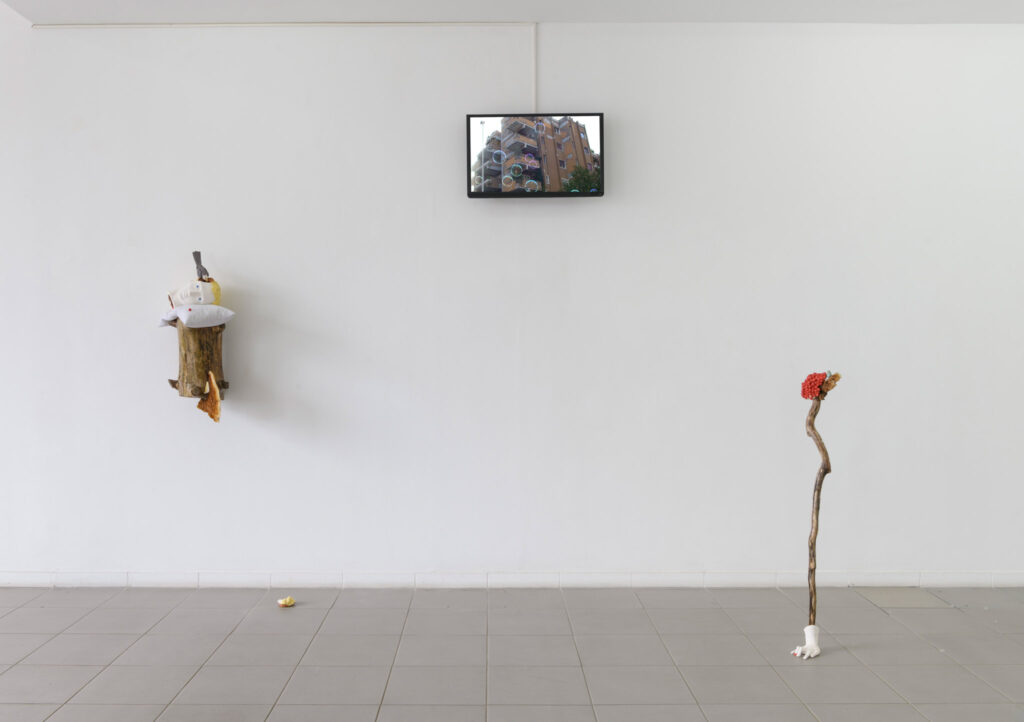
Dimore. Mariana Ferratto – Rowena Harris – Luana Perilli, 2021, installation view (ground floor), ph Giorgio Benni 
Dimore. Mariana Ferratto – Rowena Harris – Luana Perilli, 2021, installation view (ground floor), ph Giorgio Benni 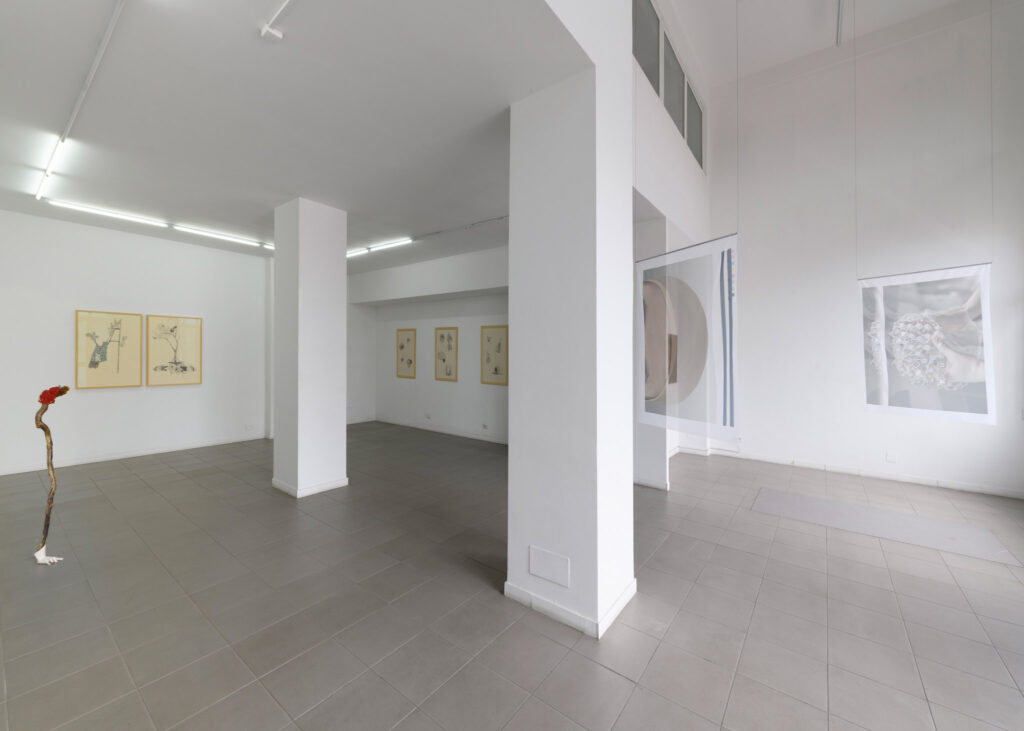
Dimore. Mariana Ferratto – Rowena Harris – Luana Perilli, 2021, installation view (ground floor), ph Giorgio Benni 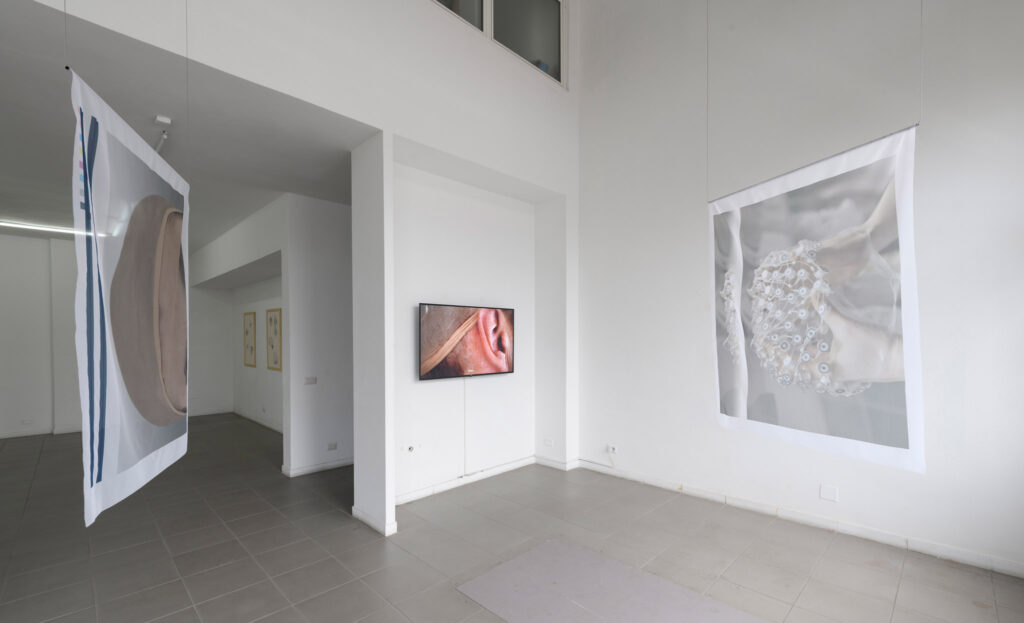
Dimore. Mariana Ferratto – Rowena Harris – Luana Perilli, 2021, installation view (ground floor), ph Giorgio Benni 
Dimore. Mariana Ferratto – Rowena Harris – Luana Perilli, 2021, installation view (ground floor), ph Giorgio Benni 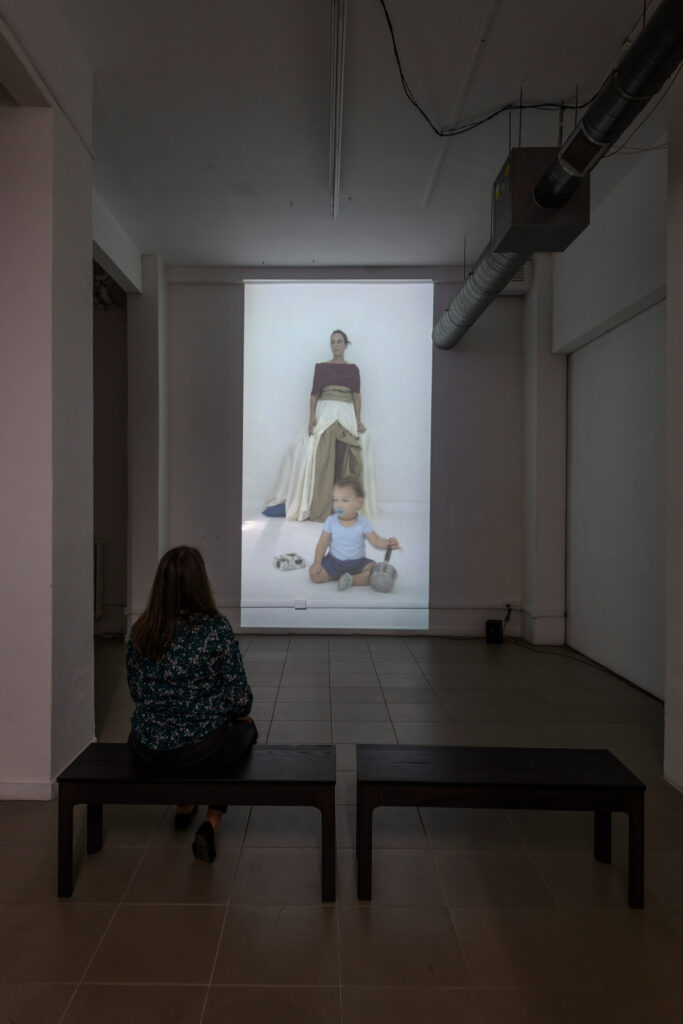
Dimore. Mariana Ferratto – Rowena Harris – Luana Perilli, 2021, installation view (basement), ph Giorgio Benni

Luana Perilli, Narciso (ritratto dell’arcangelo Michele da adolescente), 2021, ceramic, wood, honeycomb, textile, cm 105 x 50 x 45, ph Giorgio Benni 
Luana Perilli, Narciso (ritratto dell’arcangelo Michele da adolescente), 2021, ceramic, wood, honeycomb, textile, cm 105 x 50 x 45, ph Giorgio Benni 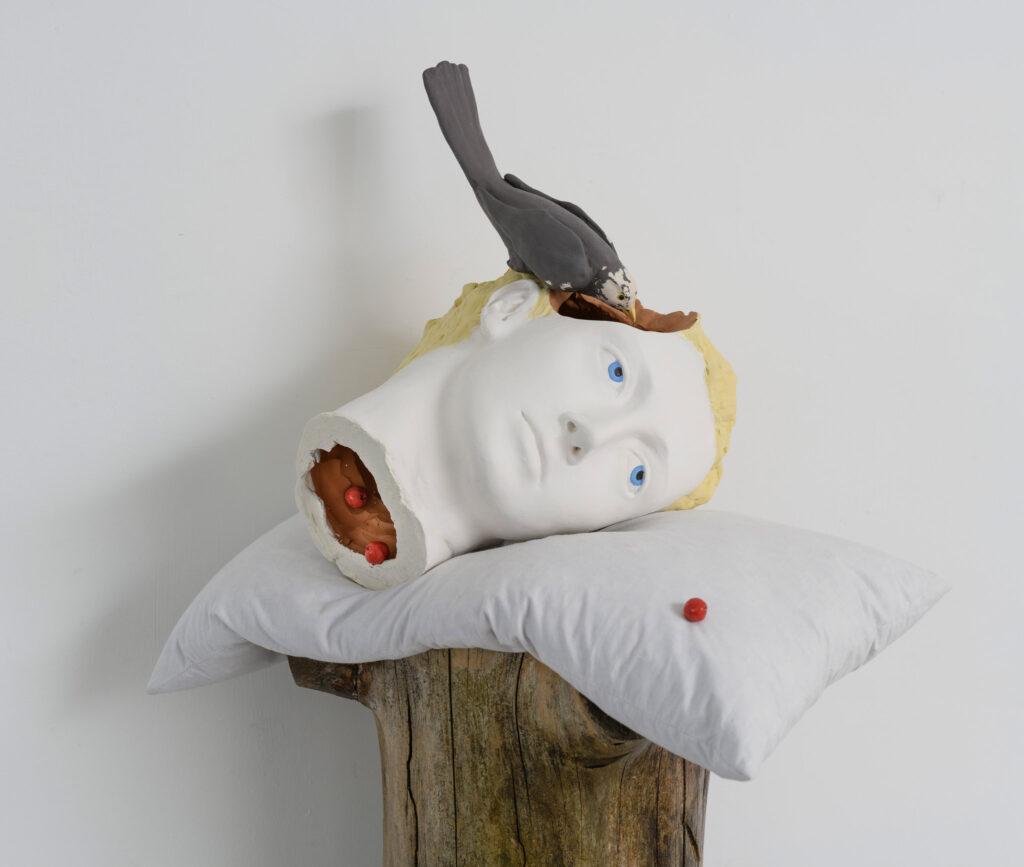
Luana Perilli, Narciso (ritratto dell’arcangelo Michele da adolescente), 2021, (detail) ceramic, wood, honeycomb, textile, cm 105 x 50 x 45, ph Giorgio Benni 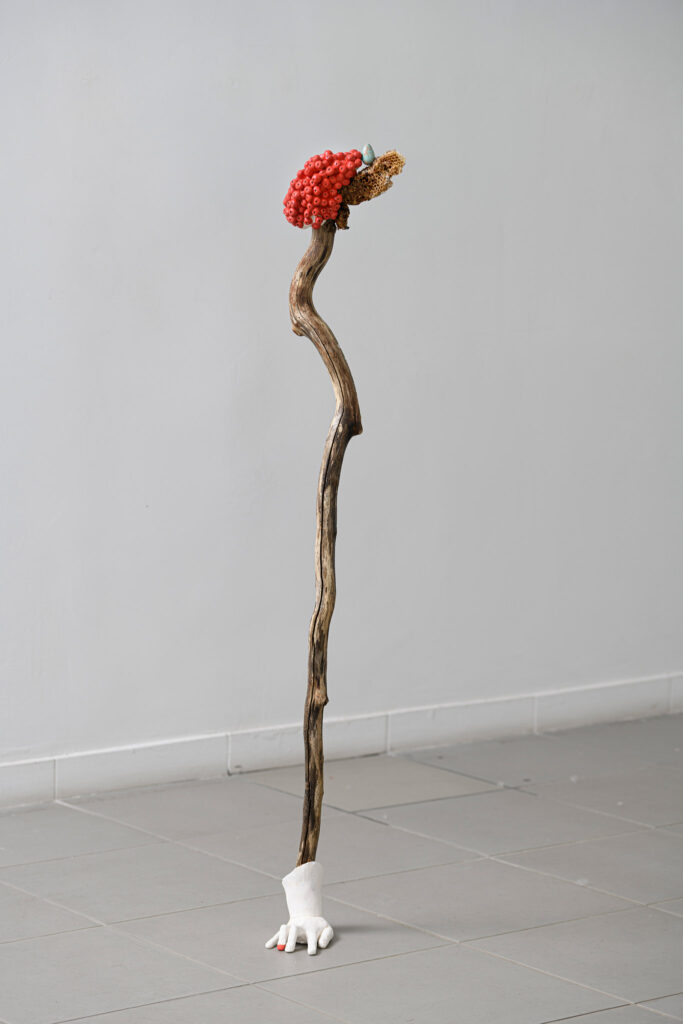
Luana Perilli, Goldmund, 2021,ceramic, wood, honeycomb, cm 120 x 22 x 10, ph Giorgio Benni 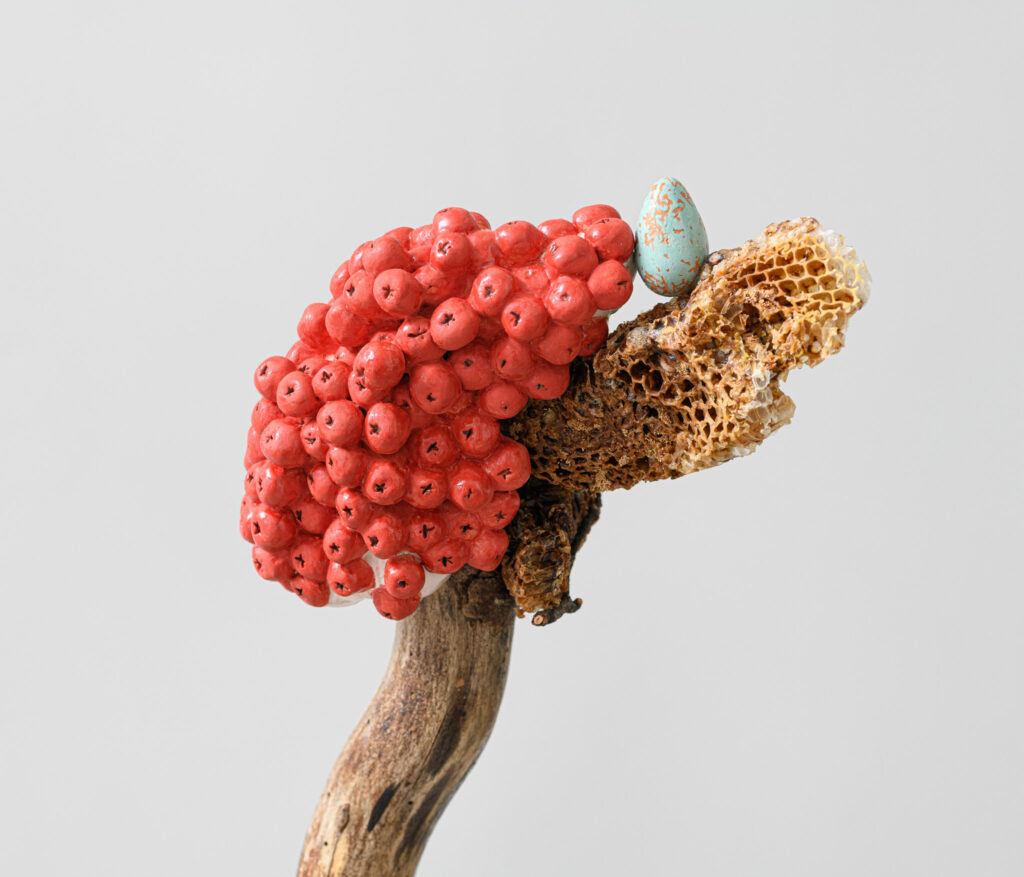
Luana Perilli, Goldmund, 2021, (detail) ceramic, wood, honeycomb, cm 120 x 22 x 10, ph Giorgio Benni 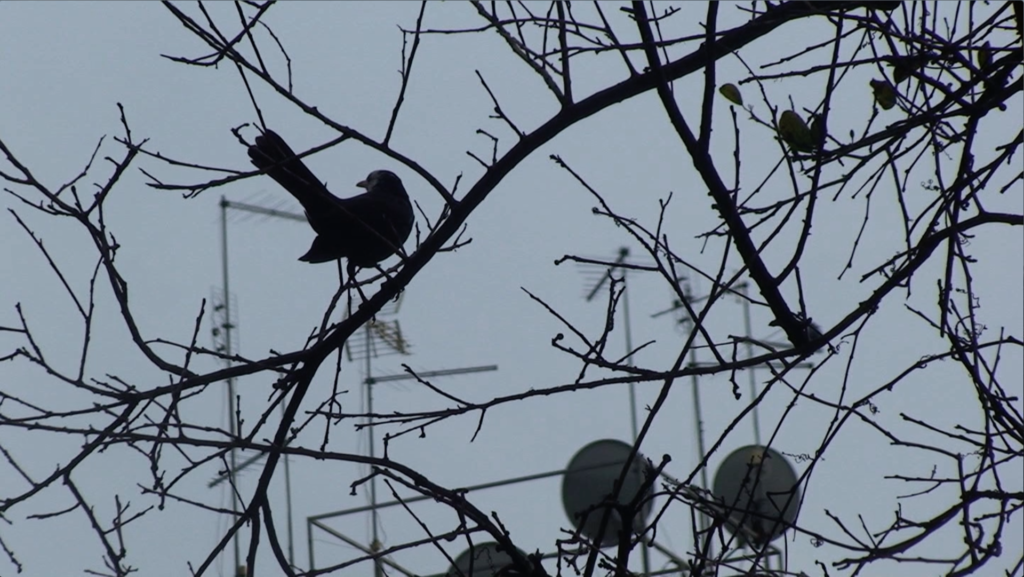
Luana Perilli, Ways of looking at a blackbird, 2021, still video, 19’33’’, HD colore, stereo sound, Ed. 3 + 1 AP 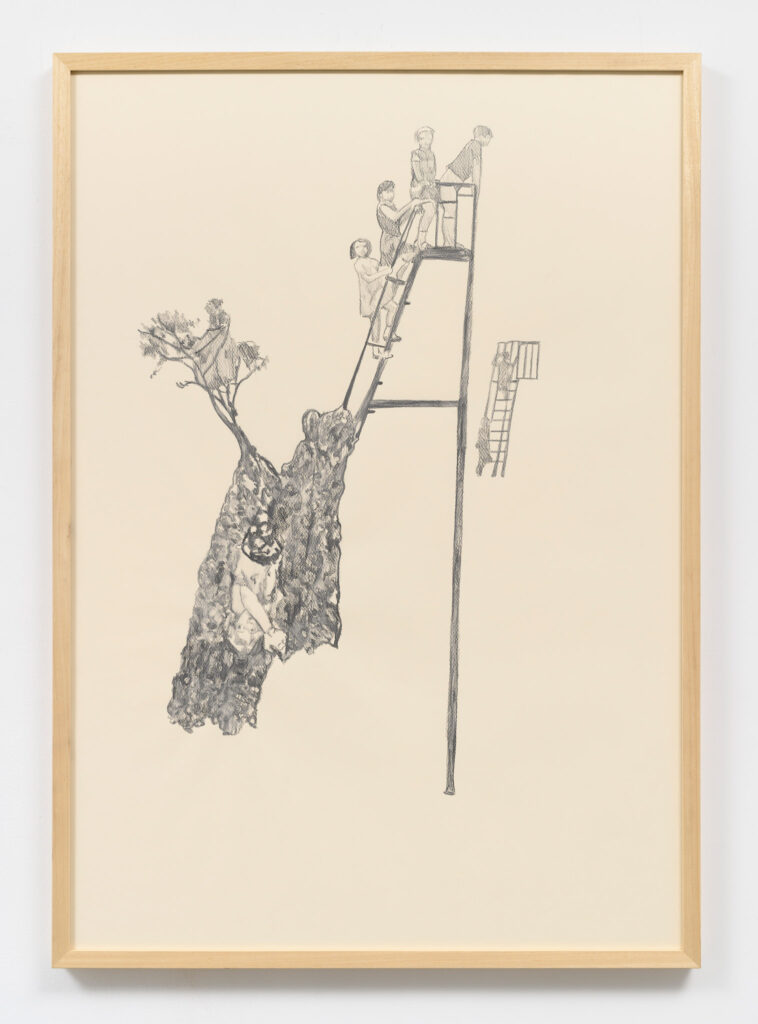
Luana Perilli, Treehouse #1, 2021, watercolor graphite, cm 103 x 73 (framed), ph Giorgio Benni 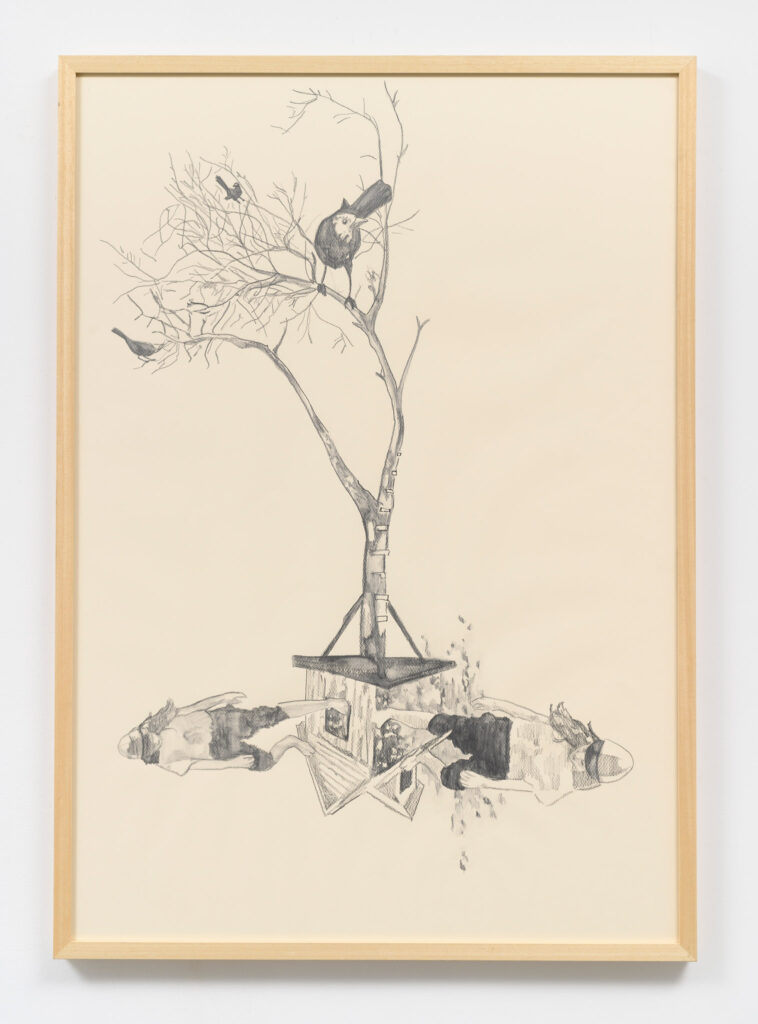
Luana Perilli, Treehouse #2, 2021, watercolor graphite, cm 103 x 73 (framed), ph Giorgio Benni 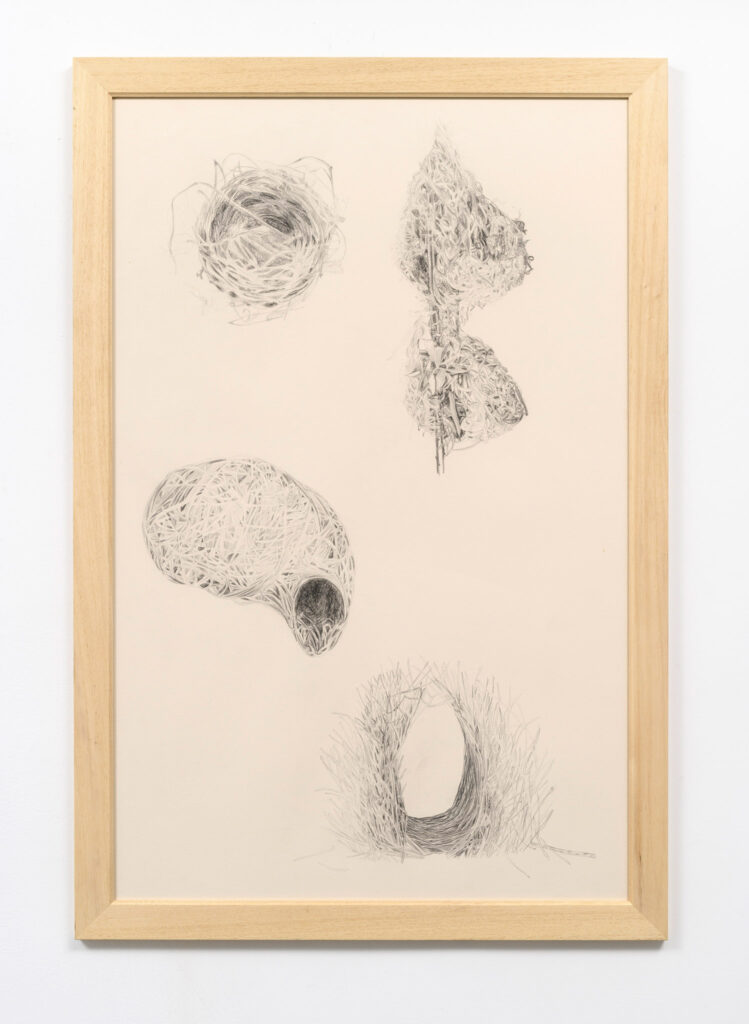
Mariana Ferratto, Archivio – tentativo di capire come si costruisce un nido #1, 2020, graphite on rosaspina paper, cm 102 x 69 (framed), ph Giorgio Benni 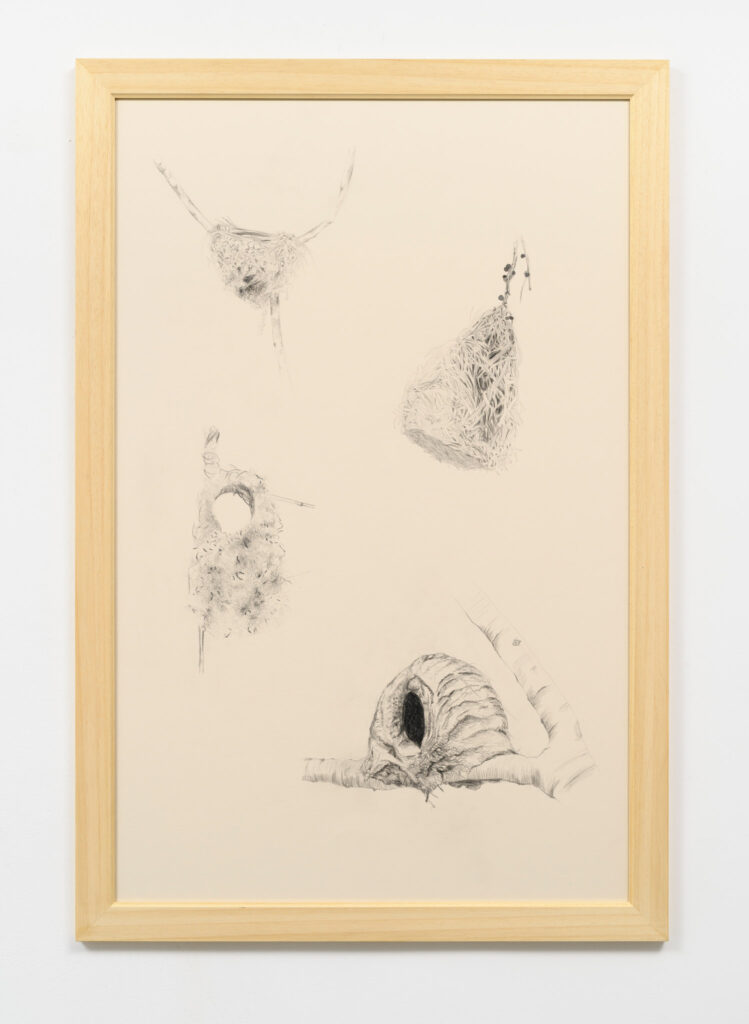
Mariana Ferratto, Archivio – tentativo di capire come si costruisce un nido #2, 2021, graphite on rosaspina paper, cm 102 x 69 (framed), ph Giorgio Benni 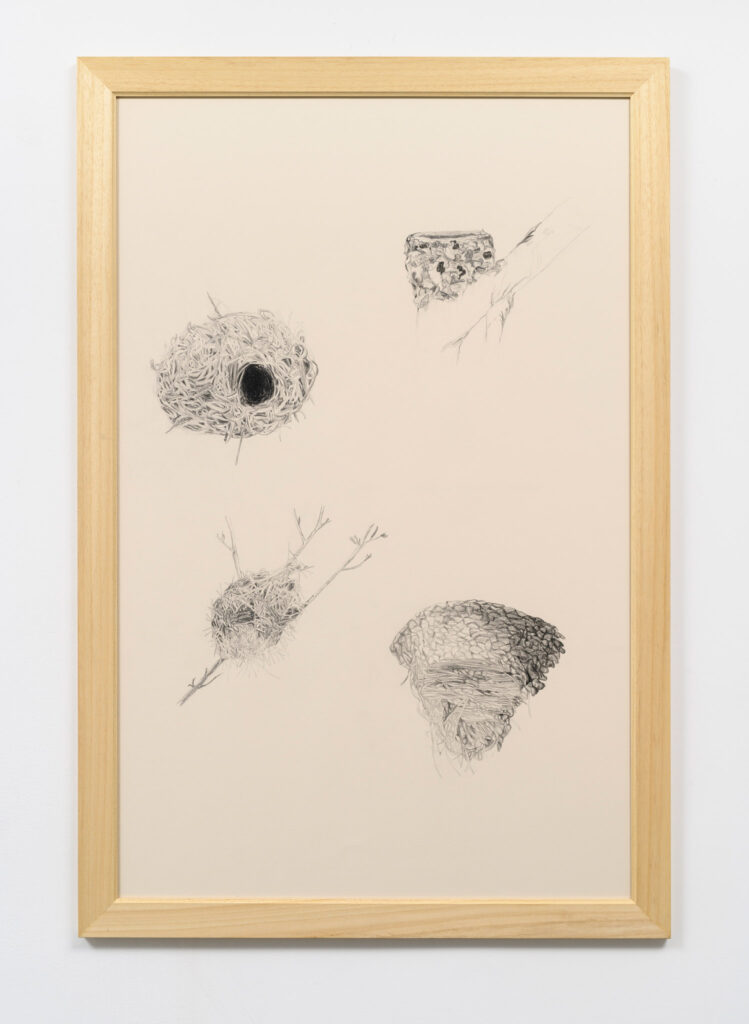
Mariana Ferratto, Archivio – tentativo di capire come si costruisce un nido #3, 2021, graphite on rosaspina paper, cm 102 x 69 (framed), ph Giorgio Benni 
Rowena Harris, Molecular Multiplicities, 2019, 9’ 20”, HD, Stereo sound, 3D model – Ten24 media, edit, words, sound – the artist, Ed. 5 + 1 AP, ph Giorgio Benni 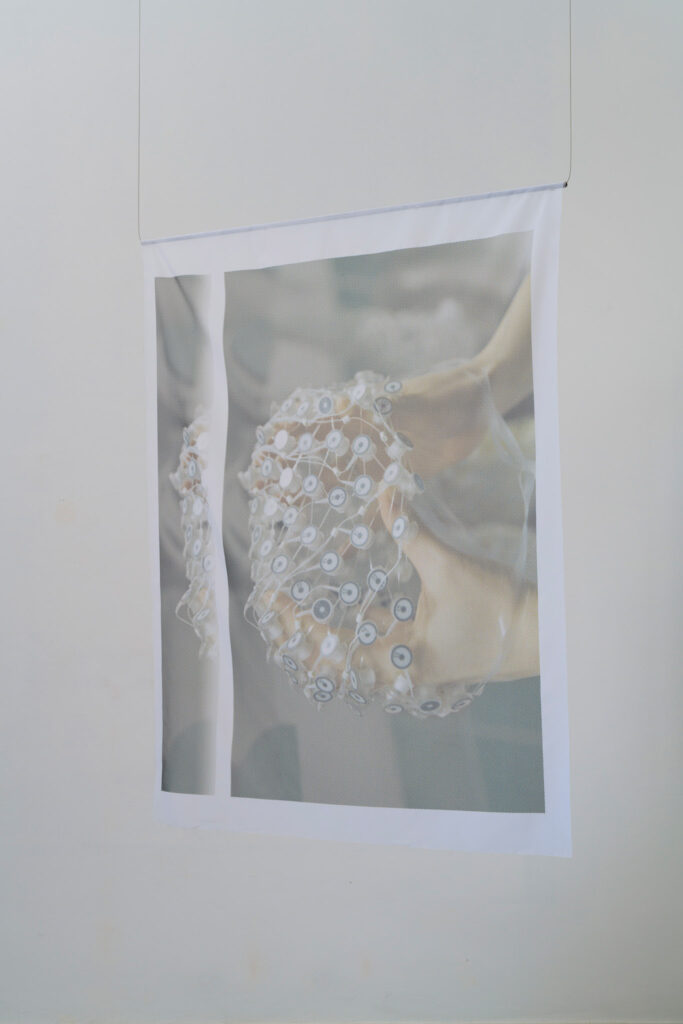
Rowena Harris, Waves and Waves, 2018, digital prints on silk habotai, steel, magnets, cm 136 x 111,5, ph Giorgio Benni 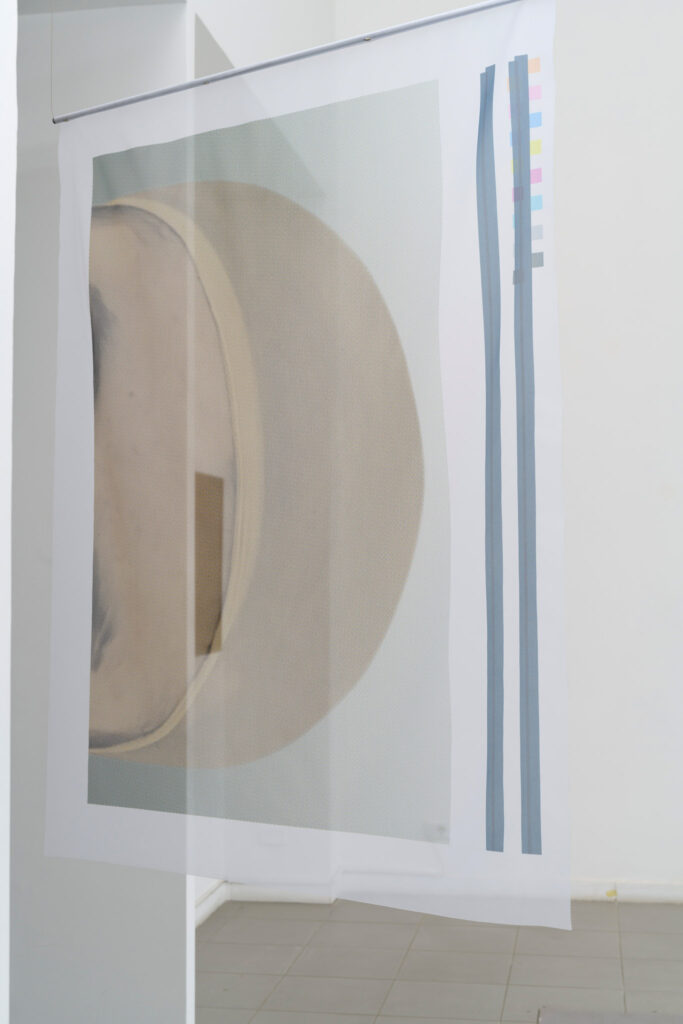
Rowena Harris, Waves and Waves, 2018, digital prints on silk habotai, steel, magnets, cm 136 x 111,5, ph Giorgio Benni 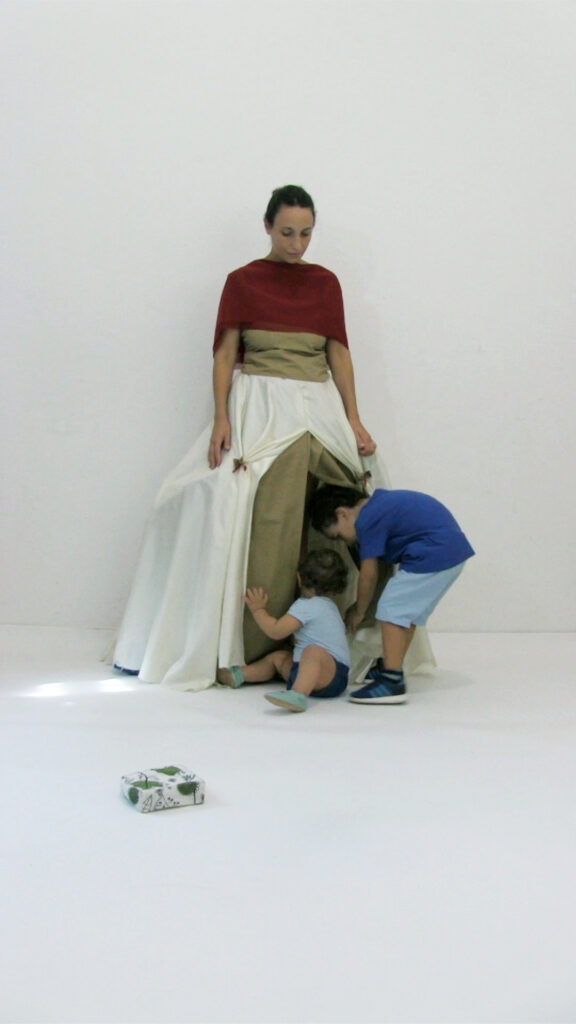
Mariana Ferratto, Madame Maison, 2020, still video, 6’00’’, HD colore, Stereo sound, Ed. 3 + 1 AP
Works
Each era presents new junctions that capture attention, polarise opinion, and call for intellectual effort in influence over them, for better or for worse. These junctions arrive when, after a long incubation, great themes of humanity reach the point of maturation, or as sudden urgencies felt in the effects of technological revolution. In their unpredicted arrival such intersections produce a scenario where clashes and entanglements become the mode to explore until either a route is found for humanity to progress, or equally where it will be overwhelmed and undone.
Amongst those which qualify in these terms for our current historical phase at the global level, it may be migration, the pandemic, and climate change as the three key issues that assume maximum importance. Each of these themes is a world in its own right, with infinite facets, implications and consequences – each of strong influence over human and planetary relations, and each determinative of rules, modalities, and qualities of living in the world. Gathered into intersection within the DIMORE exhibition, the works of Mariana Ferratto, Rowena Harris and Luana Perilli offer three partial perspectives as keys to reading this way of living, shown through the diversity of their respective researches, choice of media, and thematics conveyed.
The three artists explore the shape of living through different angles, and where these trajectories converge through their shared approached in circumnavigating the intimate and domestic, in pursuit of the relationship between self and the inhabited environment. Housing can be considered more broadly as the inhabitation of environment – the making of space for the human needs we have to deal – and where the environment is present to this space even if, and indeed when, there will no longer be humanity. Home is the affective, spiritual dimension, of the people closest to us and with whom we share physical and mental space, be they our dearest affections or strangers that we welcome as the gesture of friendship to be built. It is a welcome that starts from the inadequacy of the very concept of migrant, which implies a free will that does not really exist. To be home within one’s own skin, is to speak of the human body as seemingly closed and perfect mechanism that we imagine provide us with a sense of total reliability and protection, when it may instead be a porous home by definition, due to the innate openings of the skin and intrinsic relationality of the human immune system with the environment.
Luana Perilli takes a multidisciplinary approach by presenting a set of works ranging from ceramics and video. Inspired by the poem “The Treehouse” by James A. Emanuel, the artist identifies the treehouse as a physical and mental refuge, a return to childhood and adolescent gestations and transformations, a time of waiting. “To every man His house below And his house above With perilous stairs Between”: this is how Emanuel’s poetry ends, and Perilli wanted to walk those stairs, dialoguing with rare creatures such as the leucistic blackbeest, a natural anomaly bringing changes and magic that the artist has made the protagonist as well as other imaginary/real creatures of the forest that populate his multimedia intervention. The treehouse is also a reminder of that particular moment in adolescence when everything is a potential adamantine ready to exceed itself or give way to the squalor of the ordinary, at that moment of threshold that contains the concentration before the jump. It is reflecting on this that Perilli conceives the installation “Narcissus (portrait of the archangel Michael as a boy)”, inspired by the “Portrait of a Young Man” by Luca della Robbia and “Narcissus and Boccadoro” by Herman Hesse.
More aimed at the cultivation and protection of feelings is the interpretation of the living offered by Mariana Ferratto. The artist seems to provide a map of the places where spirituality is in, be they meticulously drawn small nests or a huge mother who becomes home for her cubs. In the video “Madame Maison” the installation dimension is functional to the use of the message: a gigantic woman interacting with children the size of adults, a woman motionless to denounce the paralyzing condition of women, even more so in the current pandemic situation. The imposing figure (the lady of the house) is clothed as an ancient lady and offers the central opening of her large skirt to the availability of two children who live there playing and simulating acts such as cooking, eating, sleeping, cleaning. In the choice of games, all projections of typically domestic activities, children elect their mother to the place of habitation. “Archive. An attempt to understand how to build a nest” is the title of the drawings that the artist has grouped on large sheets. These are meticulous designs, which reproduce leaves, small branches and mud with which each volatile species has built its own shelter. A slow and detailed work that the artist defines as a kind of mantra, to emphasise its dimension of welcome and refuge for one’s feelings.
Finally, Rowena Harris offers her interpretation of living in terms of the human body, as that inhabited, situated and interactive with the material, social and political environment. The film “Molecular Multiplicities” is an inspection of the human as a body of visual, social and scientific construction. It playfully partners a realistic 3D scan of a middle-aged white man as a problematic ‘non-identity’ tied closely to dominant concepts of the human. A scientific narrative partners describing and troubling the self / other logic of the human immune system, and, though accounting its orifices, reveals the promise of the skin’s protection as a visual mirage. If the video provokes a problematised image of the body as a protective container from external agents, the installation “Waves and Waves” jostles the viewer into invisible interaction with the work. Viewing takes place with the flow of air and movement of other bodies, as the two silk images gently dance a dialogue about their invisible relation in space and in life – of the medical technology that comes to understand a mind and vice versa, in ways that maybe ineffable and of a knowledge that is embodied.
Ogni epoca storica presenta snodi capaci di polarizzare l’attenzione dell’opinione pubblica e lo sforzo intellettuale di chi è chiamato, nel bene o nel male, ad influenzarla. Sono grandi temi che arrivano a maturazione dopo lunga incubazione o che si manifestano in tutta la loro repentina urgenza quali effetti dell’uso virtuoso o scellerato delle nuove tecnologie. Scenari più o meno inaspettati rispetto ai quali ci si scontra, ci si arrovella, ci si aggroviglia fino a che si trovano soluzioni che consentono all’umanità di progredire o viceversa di esserne travolta.
Fra le tematiche che qualificano l’attuale fase storica a livello planetario, tre assumono oggettivamente il rilievo massimo: le migrazioni, la pandemia, i cambiamenti climatici. Ciascuno di questi temi è un mondo a sé, con infinite sfaccettature, implicazioni e conseguenze. Sono questioni che influenzano fortemente il rapporto tra l’umanità e il pianeta che la accoglie, determinando regole, modalità e qualità dell’abitare il mondo. I lavori di Mariana Ferratto, Rowena Harris e Luana Perilli riuniti nella mostra DIMORE ne propongono una chiave di lettura parziale ma omogenea seppure nella diversità delle rispettive ricerche, della scelta dei media e dei contenuti trasmessi.
Le tre artiste scandagliano la dimensione del dimorare da angolazioni diverse, non ricercandone i risvolti intimi e domestici, al contrario evidenziando il rapporto tra il sé e l’ambiente che ci circonda e ci contiene. Dimora è quindi l’habitat con cui entriamo, volenti o nolenti, in contatto e con le cui necessità dobbiamo fare i conti, perché la natura ci sarà sempre anche se e quando non ci sarà più l’uomo. Dimora è la dimensione affettiva, spirituale, le persone che ci sono più vicine e con cui condividiamo spazio fisico e mentale, siano esse i nostri affetti più cari o estranei che dobbiamo accogliere in nome di un sentimento tutto da costruire e che ancora non è stato nominato, un’accoglienza che parta dall’inadeguatezza del concetto stesso di migrante, che sottintende un libero arbitrio in realtà inesistente. Abitare la propria pelle significa parlare del corpo umano come meccanismo apparentemente chiuso e perfetto che ci fornisce un senso di totale affidabilità e protezione, pur essendo invece, a diverse scale, poroso per definizione a causa dei suoi numerosi orifizi e delle interazioni del sistema immunitario con l’ambiente
Luana Perilli adotta un approccio multidisciplinare presentando un insieme di lavori che spaziano tra ceramica e video. Ispirandosi alla poesia The Treehouse di James A. Emanuel, l’artista individua nella casa sull’albero un rifugio fisico e mentale, un ritorno alle gestazioni e trasformazioni infantili e adolescenziali, un tempo di attesa. Ad ogni uomo la sua casa sotto e la sua casa sopra, in mezzo scale pericolose: così termina la poesia di Emanuel e Perilli ha voluto percorrere quelle scale, dialogando con creature rare come il merlo leucistico, anomalia naturale portatrice di cambiamenti e magie che l’artista ha reso protagonista al pari di altre creature immaginarie/reali del bosco che popolano il suo intervento multimediale. La casa sull’albero è anche un richiamo a quel particolare momento dell’adolescenza in cui tutto è un potenziale adamantino pronto ad eccedere se stesso o cedere il passo allo squallore dell’ordinario, a quel momento di soglia che contiene la concentrazione prima del salto. E’ riflettendo su questo che Perilli concepisce l’installazione “Narciso (ritratto dell’arcangelo Michele da adolescente), ispirato al “Ritratto di giovinetto” di Luca della Robbia e a “Narciso e Boccadoro” di Herman Hesse.
Più rivolta alla coltivazione e protezione dei sentimenti è l’interpretazione dell’abitare offerta da Mariana Ferratto. L’artista sembra fornire una mappa dei luoghi in cui alberga la spiritualità, siano essi dei piccoli nidi minuziosamente disegnati o una madre enorme che diventa casa per i suoi cuccioli. Nel video “Madame Maison” la dimensione installativa è funzionale alla fruizione del messaggio: una donna gigantesca che interagisce con bambini dalle dimensioni di adulti, una donna immobile a denunciare la paralizzante condizione femminile, ancor più nell’attuale congiuntura pandemica. L’imponente figura (la signora della casa) è abbigliata da antica dama ed offre l’apertura centrale della sua grande gonna alla disponibilità di due bambini che la abitano giocando e simulando atti come cucinare, mangiare, dormire, pulire. Nella scelta dei giochi, tutte proiezioni di attività tipicamente domestiche, i bambini eleggono la loro madre a luogo di abitazione. “Archivio. Tentativo di capire come si costruisce un nido” è il titolo dei disegni che l’artista ha raggruppato su grandi fogli. Si tratta di disegni minuziosi, che riproducono foglie, piccoli rami e fango con cui ciascuna specie volatile ha costruito il proprio rifugio. Un lavoro lento e dettagliato che l’artista definisce come una sorta di mantra, a sottolinearne la dimensione di accoglienza e rifugio per i propri sentimenti.
Infine, Rowena Harris offre la sua interpretazione dell’abitare: un corpo abitato e che abita, un corpo situato e interattivo con l’ambiente materiale, sociale e politico. Il film “Molecular Multiplicities” è un’ispezione dell’umano come costruzione visiva, sociale e scientifica. L’immagine è associata ad una scansione 3D realistica di un uomo bianco di mezza età, una “non identità” problematica strettamente legata a concetti dominanti per l’umano. Un partner narrativo scientifico che descrive e interroga la logica del confronto tra il sé e l’altro propria del sistema immunitario umano e, pur contabilizzando i suoi orifizi, rivela la promessa della protezione della pelle come un semplice miraggio. Se il video provoca un’immagine problematizzata del corpo come contenitore protettivo da agenti esterni, l’installazione “Waves and Waves ” spinge lo spettatore all’interazione con l’opera. La visione è condizionata dal flusso dell’aria e dal movimento di altri corpi, mentre le due immagini stampate su seta danzano delicatamente dialogando sulla loro relazione invisibile nello spazio e nella vita – quella della tecnologia medica che arriva a comprendere una mente e viceversa, in modi forse ineffabili che incarnano la conoscenza.
share on